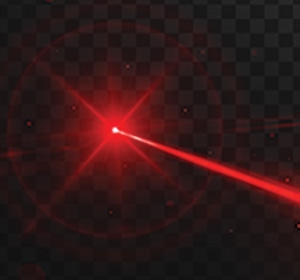-2.jpg) By Thomas HornigoldFeb 15 2018
By Thomas HornigoldFeb 15 2018Lasers are useful across a vast range of disciplines, from the optical characterization of materials for solar panels or LEDs, all the way up to inertial confinement fusion experiments. For decades, laser physicists and materials scientists have been grappling with how to improve their systems. Lasers have to balance a great many different requirements. They need to be powerful, ultimately focusable, stable, efficient and ideally tuneable to precise frequencies. In addition to this, for arrays of lasers, the array still needs to function even if parts or sub-elements of it fail.
The answer to this problem came from developments in fundamental theoretical physics. Recently, an area of great interest for condensed-matter theorists has been the study of topological insulators. The Nobel Prize was awarded two years ago to David J Thouless of the University of Washington, Duncan M Haldane of Princeton and J Michael Kosterlitz of Brown University for their research into how topology influences these exotic forms of matter.
 Maryna Stamatova/shutterstock
Maryna Stamatova/shutterstock
New research hopes to establish topological lasers as the next big field of inquiry. The experimental aspects of the research were led by Professors Mercedeh Khajavikhan and Demetrios Christodoulides of the College of Optics and Photonics (CREOL) and their graduate students Steffen Wittek, Midya Parto and Jinhan Ren. A team from Technion in Israel that includes Moti Segev, Miguel Bandres, and Gal Harari initiated some of the theoretical aspects of the research; they have collaborated ever since.
These topological insulators carry ‘supercurrents’ on the surface, while the interior of the substance is an insulator. This surface current continues unidirectionally without being scattered by defects on the surface of the material. Understanding new processes of electron transport and their properties – characterizing them with both theoretical models and experiments – is key to a broad number of technological applications. Superconductivity is a classic example of exotic electron transport phenomena, with all of its theoretical and practical applications.
Topological lasers is a relatively new area of research. Previously, studies of topological condensed matter have focused on electron transport: electrons have charge and can be influenced by magnetic fields. Photons are chargeless and spin-zero; it’s much harder to influence them using configurations of matter that are used in electron transport. Similarly, the semiconductors that are typically used in laser research can’t be easily manipulated by magnetic fields as in the electron transport case.
To solve these problems, we came up with clever designs to trick photons to feel as if they are experiencing a magnetic field and having a spin
Khajavikhan, Lead Experimentalist
An array of microring resonators were arranged to mimic the inhomogenous effects of a magnetic field; by pumping only the rings on the periphery of the array, they excited the laser to emit in the topological edge mode. The result was a coherent, high-power, single-mode beam – hence highly mono-energetic. The researchers hope that the use of a topological laser will reduce inefficiencies due to surface defects and hence prove more stable.
This work was published in two papers in Science; one that establishes the theoretical basis for the material, and the other that describes the experimental design. It represents both the first theoretical forays into the field of topological lasers, and the first experimental confirmation that such a system can be built and exhibit potentially useful properties, such as increased efficiency, beam quality, and resilience. Similar to the case of electron transport, where the topological properties produce a kind of “protected transport” that is resilient to defects and disorder, these topological lasers have the potential to do the same for photons. For the first time, these properties can be used to produce a unidirectional laser in a single mode without magnetic fields.
It’s exciting to be involved in the new field of topological quantum condensed matter, where whole new areas of application such as this remain to be discovered. "There is a great pleasure to see how a line of fundamental research can address such tangible and practical problems," according to Christodoulides
Disclaimer: The views expressed here are those of the author expressed in their private capacity and do not necessarily represent the views of AZoM.com Limited T/A AZoNetwork the owner and operator of this website. This disclaimer forms part of the Terms and conditions of use of this website.